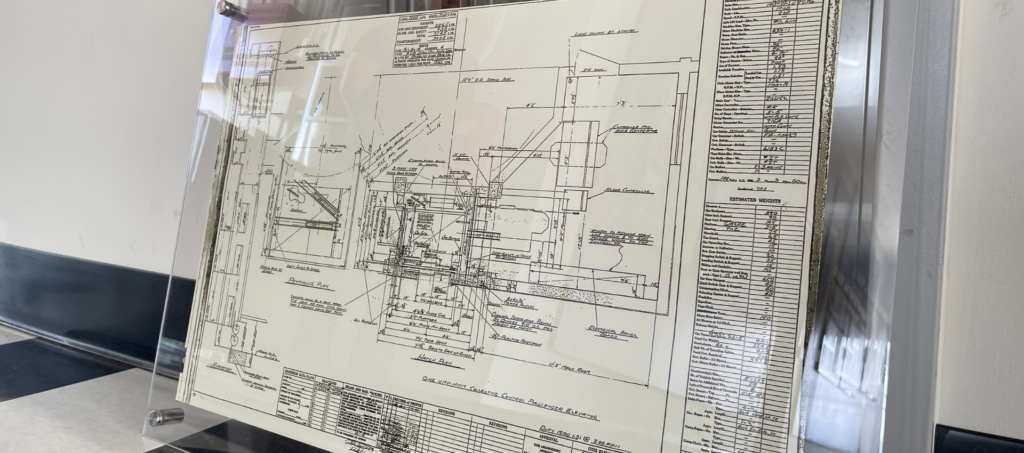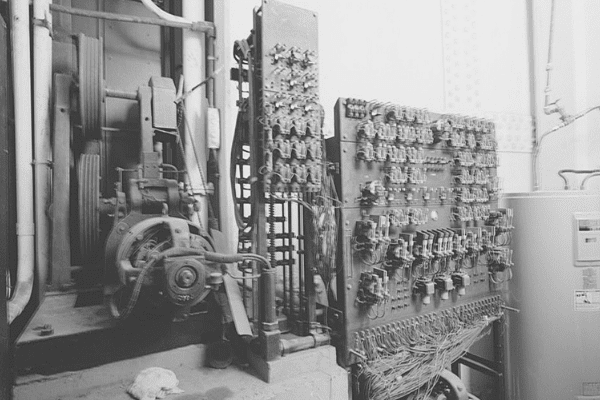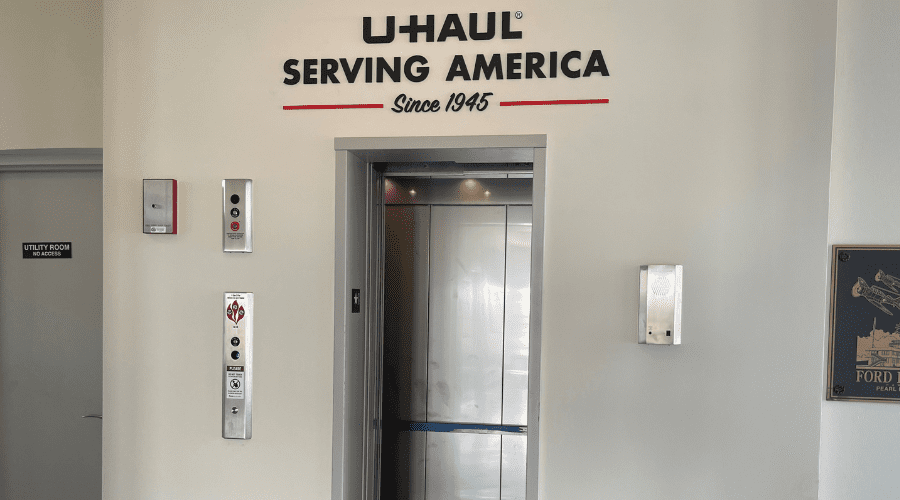Historic Elevator In The Ford Island Control Tower
8/19/2022
Historic Elevator In The Ford Island Control Tower
How preserving historic documents helped bring the iconic elevator back into operation.
Installation and construction of the upper cab positioned at the top of the Ford Island Control Tower began on November 15, 1941. At that time, Otis Elevators began installation of the original elevator to allow access to the upper cab, and provide the Navy a high-level view of the runway and the harbor.
Pearl Harbor Aviation Museum began restoration of the Ford Island Control Tower and elevator in 2012. After over 35 years of inactivity, much of the elevator within the tower was damaged and corroded. Decades later Otis found itself working on the elevator once again, and partnered with the Museum to repair and renovate the historic elevator to meet modern safety standards.
Thanks to the archival preservation of historic elevator plans and efforts to maintain and honor the historic design and function of the elevator, Pearl Harbor Aviation Museum and Otis were able to restore, preserve, and open the elevator to the public in May 2022.
What are elevator plans?
All elevator plans and drawings are unique and specific to each project, providing specific dimensions and other measurements needed for installation. Otis explained, in the case of the original Ford Island Control Tower elevator plans from the 1940s, “They were very customized due to the unique structure; having an elevator shaft connected to the side of a 140-foot water tower is not something we usually come across.”
Not common for all projects, but these historical plans and drawings of the Ford Island Control Tower Elevator, which date back to the 1940s, had been archived and preserved in the library at
Otis headquarters.
Otis usually archived and preserved the plans of historic or interesting projects they worked on, and because of the historic and iconic nature of the Ford Island Control Tower, they kept in their records. Although they may have never intended or planned to need them again in the future, when the restoration project began, the archivist was able to produce copies of the historic plans for the team.
Because the plans were preserved and the team had access to them throughout the project, they were able to maintain the historic and iconic aspect of the elevator. According to Joe McCartney, Modernization Specialist for Otis, in order to protect, restore, and modernize the tower elevator, the historic plans were critical in preserving the unique aspects of
the elevator.
One of these was the placement of the driving machine. Because the upper cab is at the top of the tower, the driving machine needed to be placed on ground-level instead of the usual, above the elevator. Another unique design element preserved from the plans was the use of two doors, one on the side and one in front. The front door is automatic and used on the bottom floor while the side is a vintage, accordion style manual gate used to access the upper cab.

From a visitor perspective, everything looks to be new, but Otis explained that many of the structural pieces, or parts that visitors don’t see, throughout the elevator were retained. The shaft, car frame, safeties, rails, and many parts within the elevator run were preserved. McCartney elements were, “the original design and something we kept to preserve history. Every day we worked at this tower, we thought about its place in history. The historic theme and architecture throughout the building carries all the way through to the elevator.”
The Otis team used the historic plans as a guide to update and create a more reliable driving machine, which helped the Museum maintain the historic and iconic look while safely returning the elevator to operation.


There is a lot of history that comes with an 80-year old building, water tower, and elevator – all that withstood the attack on Pearl Harbor that fateful morning, and McCartney explained that much of the project,
“stayed true to history.”
Beyond restoration and preservation, the project stayed true to history in other ways.
Vintage elevators, like the tower’s, have their safeties in the floor, which were usually covered by a medallion. McCartney said in a rare decision to pay tribute to the time, the safeties stayed true to the era and remained on the bottom, and the system was kept in place. In homage to the history of the building, the story, and the era, Otis installed a medallion in the same style which could be found in the original tower elevator. The medallion even bearing the 1940s Otis logo.
In May 2022, Pearl Harbor Aviation Museum, in partnership with Otis and with support from U-Haul International, completed the elevator restoration project, and opened the tower to the public. At the grand opening and blessing of the Ford Island Control Tower elevator, Otis Elevator gifted the Museum a framed version of the historic 1940s elevator plans.

“The plans on display help visitors connect the dots from the past to the current build, which is great to see. As a 170-year-old company, history is incredibly important to us and our legacy. This project was not just part of Hawaii’s history or U.S. history,
but world history.“
Joe McCartney
As visitors look upon the plans in the tower, we hope it allows them to see the project full circle and experience the importance of preserving history first hand. Whether preserving history is as small as keeping plans and drawings or as large as restoring a WWII control tower, it is just as important in ensuring that the history and stories of the brave men and women that were lost on the morning of December 7, 1941 and throughout WWII can be shared for generations
to come.

